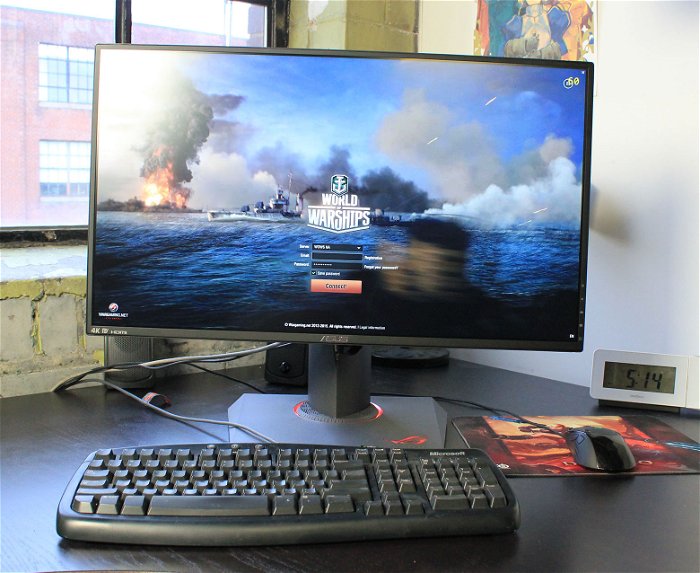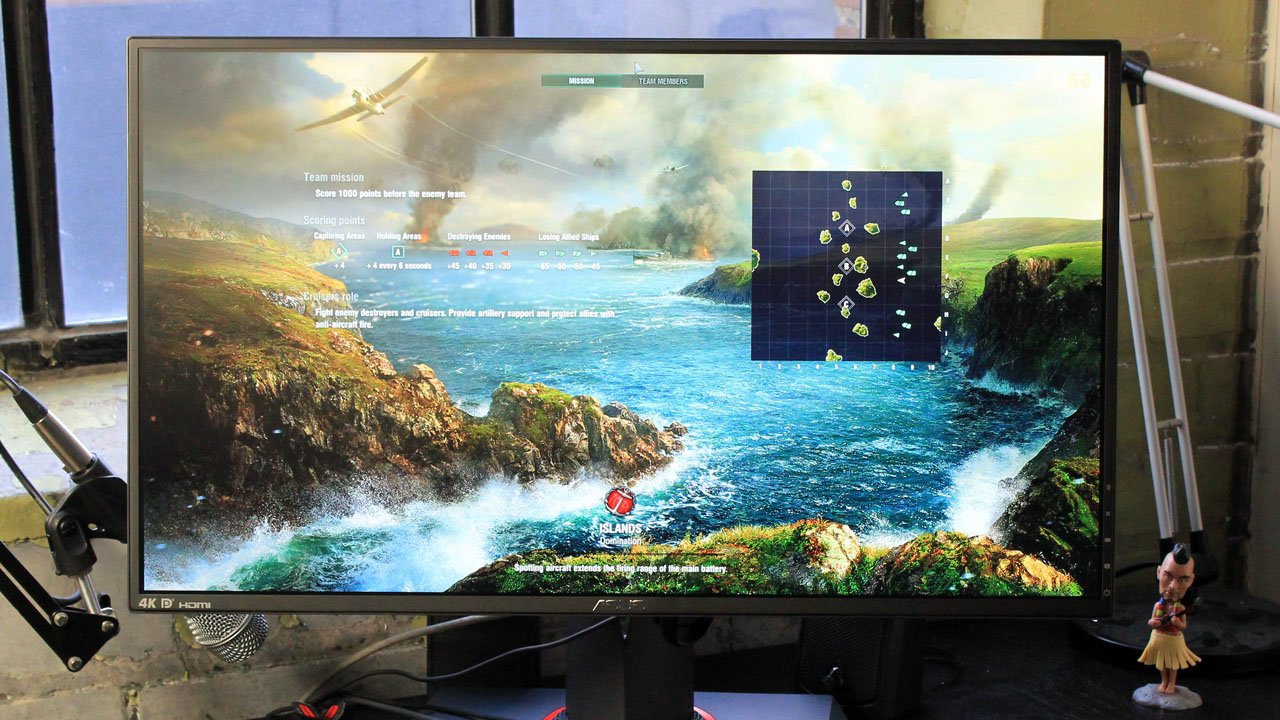A couple weeks ago, I reviewed a 4K monitor from ViewSonic that struck me as the first properly affordable 4K monitor that had a home in gaming—even if it left a bit to be desired with brightness and colour. This time, it’s an ASUS offering that is targeted at the complete opposite end of the market spectrum, and I’d be lying if I didn’t say it was the most impressive bit of kit I’ve ever used.
4K monitors fall under the category of expensive luxuries for most PC gamers. While we’ve finally entered the era of affordable 4K gaming, with entry-level offerings that finally cost less than the graphics cards required to power them, high-quality examples still threaten to break the bank, costing more than many gamers want to spend on their entire setup. That leaves many of the best offerings falling within the “money-is-no-object” column. And if money were no object, the new ASUS PG27A Swift would be what I would have. Well, if money is no object, I’d have several, but it would be several of these, and not several of something else.

I find it difficult to put into words just how impressed I was with the 27 inch IPS panel that powers the new 4K G-Sync offering from ASUS—the first of its kind in the world. Nothing could have prepared me for the colour vibrance that it offered. Nothing. 4K monitors are notoriously iffy when it comes to their vibrance and colour accuracy, and they get worse the higher the refresh rate. It’s all the more impressive, then, that the PG27A offers up quality that I’ve never seen from even the more reliable gold standard 1080p monitors. In addition to this, the 27 inch panel is large enough to turn anything into a cinematic experience, and the range of adjustment, from 60 degrees of swivel in either direction, 20 degrees of positive and 5 degrees of negative tilt, 120mm of elevation control, and 90 degrees of ration ensures that wherever you need it to fit, it’ll fit.
My biggest criticism is the monitor’s defining feature: its inclusion of G-Sync in a 4K package. Aside from the added cost—which is substantial—the technical limitations are more than I’m willing to submit to. I speak, of course, of the inability to utilize the G-Sync feature with a multi-monitor setup. Frankly, I’d rather lose an arm than a monitor, and if I get frame stuttering from low FPS, I’ll invest the added cost of the G-Sync in a video card upgrade instead—or take the free route of dialing back my video settings the way that gamers have been doing since time immemorial. I don’t mean to sound cynical about it, but… well, I am cynical about it.


Look, when it comes to anti-stutter tech, G-Sync has FreeSync licked at the moment, there’s no getting around that. It’s just better. But it’s also proprietary, and controlled on the monitor end, which means that the hardware to power it is sold to the monitor manufacturers by nVidia at no small cost, which is then tacked onto the cost of the final product for the consumer, and you better believe they charge a premium for it. Compared to FreeSync, which is open source and controlled on the GPU end of things, it all seems a bit dear, if I’m honest. Having spent plenty of time with my other monitors disconnected to test out the G-Sync, I can’t think of many things I would want to do less than pay more money to have to sacrifice them.
But clearly there are people who are willing to do that, because ASUS claims there has been quite an outcry for a G-Sync offering in their 4K line. For those people, then, I can’t think of a better monitor out there—even before considering that there are, quite literally, no competitors in the market at the moment. ASUS have simply taken their brilliant PG27 series and bolted on the G-Sync controller. Sure, it’s eye-wateringly expensive, but this is a “money-is-no-object” monitor, and as far as flights of fancy go, this is one hell of a game-changer for your PC experience. Truthfully, knowing the raw panels that ASUS buys, you won’t find a better looking offering coming from another manufacturer, even once their G-Sync offerings come to market, but they certainly charge a mint to claim that. For those who need the absolute best, or who truly need the G-Sync, this is now, and will probably forever remain king. For everyone else, save yourself the G-Sync and you could almost justify the impulse buy—if you squint and don’t second guess yourself.






